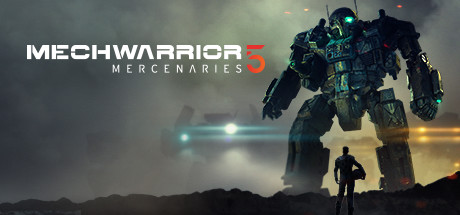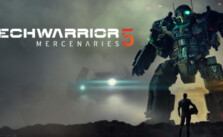MechWarrior 5: Mercenaries – Beginner’s Guide to ‘Mech Construction Basics’
Beginner’s Guide to ‘Mech Construction Basics’
This guide is designed to help players who are new or new-ish to Battletech understand how ‘Mechs are designed and assembled, and what to look for in a good chassis vs a mediocre one. Fair warning, it involves math.
The core concept of Battletech used to be one of decisions and compromises, before the advent of XL Engines, Double Heat Sinks, Endo Steel Internal Structure, and super lightweight Clan Weapons, and such. When those arrive on the scene, all of this goes out the window and the game just becomes a matter of who can pour fire the fastest.
But with the original Battletech, you had to make hard decisions about how fast you wanted to go, how much protection would be enough, how many weapons you wanted to carry, and how much heat you could shed. No mech could do everything.
This leads to a wide variety of usefulness among the chassis. Some are just utter garbage, like the Charger, and some really shine, like the Black Knight or Marauder. The reasons for that are fairly straightforward.
Every ‘Mech spends a fixed amount of its maximum tonnage on three things. The Internal Structure (takes up 10% of the tonnage), the Cockpit (always 3 tons), and the Gyro (Engine Rating divided by 100 rounded up, in tons, so, for example, a 200 rated engine requires a 2-ton Gyro). These tonnage costs are paid by every mech.
After that, you get to the decision points. How fast you want to move works out to the walking speed times the ‘Mech’s total tonnage. So, a Locust (20 tons) had a tabletop walking speed of 8 hexes (which traslates to a bit over 80kph in computer games), thus requiring a 160-rated engine. Looking at the engine chart (which you can find all over the web with a simple search for “Battletech Engine Rating Chart”), that engine weighs 6.0 tons.
Thus, before weapons, armor, heat sinks, or jump jets, that Locust has used up 3 tons (cockpit) + 2 tons (internal structure) + 6 tons (engine) + 2 tons (gyro, 160/100 rounded up), or 13 tons out of its total allotment of 20. That leaves 7 tons total for everything else…weapons, armor, heat sinks, jump jets, other specialized equipment (ECM, for example).
Why is this important? Simple…because as you go up in chassis and engine size, you often get diminishing returns. Engines start going up in weight VERY fast at the higher ratings. A 400 rated engine (the largest there is) eats up 52.5 tons of that 80-ton Charger’s weight, so it can move 5 (walking)/8 (running), 53-ish kph/83-ish kph in the video game. 4 tons of gyro, 8 tons of internal structure, and 3 tons of cockpit (67.5 tons), and you can see why it doesn’t have any weapons.
And this is the core concept we’ll examine here…why certain tonnage classes of ‘Mechs are simply better than others.
Here’s a great example. All of the 55-ton ‘Mechs (Wolverine, Shadow Hawk, Dervish, Kintaro, Griffin) move 5/8, using a 275-rated engine weighing 15.5 tons. If you compare that to all of the 60-ton mechs moving at the same speed (Champion, Dragon, etc.), they require a 300-rated engine. That weighs 19 tons. They also use up a half-ton more of internal structure, so just to move the same basic speed, they use up 4 of the 5 tons that they gain over the 55-ton class. That means that more expensive ‘Mech, that weighs 5 extra tons, costs more to maintain every pay cycle, and eats up more of your available drop tonnage, ONLY GETS 1 MORE TON TO PUT GEAR ON IT.
The exact same thing happens at the break between light/medium (35/40 tons) and heavy/assault (75/80 tons). The extra tons you gain on the chassis weight are ALWAYS eaten up by the extra engine weight, internal structure weight, etc., assuming you wish to maintain the same speed. A 4/6 speed 75 ton ‘Mech (300 engine, 19 tons, 7.5 tons IS, 3 ton Gyro) will carry the same or more goodies than an 80 ton ‘Mech moving the same speed (320 engine at 22.5 tons, 8 tons IS, 4 ton Gyro). All while costing less both to buy/salvage and maintain, and using less of your alotted drop tonnage.
A Maruader or Orion carries the same loadout weight as a Victor or other 80-ton 4/6 mech and has the advantages listed (cost/drop weight).
These weight advantages become ever more profound when you factor in Jump Jets. When you reach the breakpoints for JJ weight (.5 tons for light/medium mechs, 1 ton for heavies, 2 tons for a lot of assaults), you can end up using a bunch of your extra tonnage on those JJ. A 55 ton 5/8/5 (walk/run/jump) mech is only paying 18 tons total for the engine and JJ. A 60 ton mech would pay 24 tons (plus the .5 ton extra IS weight), meaning the lighter mech carries more weapons, armor, and/or heat sinks.
While 1-2 tons might not seem like a lot, you should be trying to squeeze every last bit of efficiency out of your ‘Mechs that you can. That extra-medium laser, a ton of ammo, heat sink, a ton of armor, or ECM unit might just save your bacon.
Of course, there are other considerations too. Maybe you just like the way certain ‘Mechs look. That’s cool. Maybe some of them pilots better for you, or you like the weapon types and hardpoints more, or a bunch of other factors. All of that is great…it’s YOUR game, have fun with it. Sometimes you just have to take and pilot the ‘Mech’s the game gives you too. No helping that.
But if you find yourself struggling from time to time, there are ways to drag a little bit better efficiency out of your lance. Look at a Max Drop Weight of 200 tons, for example. Would you rather send in the 3 Dragons/Champions/Whatever you bought, and have a whopping 20 tons left over to bring a sacrifical Locust, or would you rather bring 3 likely more efficient 55 ton ‘Mechs and a 35 ton?
Little things like that can make a big difference on the battlefield. Understanding the subtle nuances of how and why ‘Mechs are the way they are is the first step in getting that efficiency out of them.
Hope this helped someone out there. And, as a final note, if you ever decide to play the turn-based Harebrained Schemes Battletech (fantastic game), this little article will be a goldmine for you for another reason…the initiative system. Not only does that 55 ton Mech do everything the 60 ton one does cheaper, it also moves one initiative step faster, which is a HUGE difference in turn-based.
Good luck on the field.




